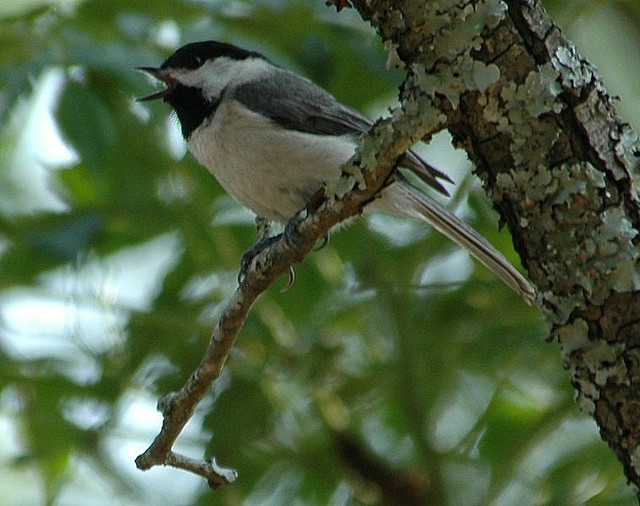The coming of spring brings sounds of water in motion — dripping of melting snow from rooftops, rivulets running down the street and pouring into a storm drain, or the roar of a river in full flood. Spring is a time of winds and storms, each with its own acoustic signature.
Noticing the sounds in your environment, and accepting them, is an ancient meditation practice. Hearing allows us to track what is happening in our environment. Sound provides information about objects at a range of distances and in all directions: a three-dimensional sense of the world unhindered by darkness or by the presence of other objects that block our line of sight.
Hearing likely evolved quickly in higher animals. Birds, mammals, fish, amphibians, insects and crustaceans all rely on hearing to detect other organisms and changes in their physical environment. Being able to hear the approach of a predator is a life or death matter. Being able to silently stalk a prey animal can determine a hunter’s success.
Once animals could hear, they evolved the ability to make sounds and communicate with each other. Whether we’re a human, a frog, a bird, or a cricket; what we vocalize (say, sing or stridulate) can determine who we attract for a partner.
Biologists for centuries have studied how different species hear and how they use sound to communicate. Charles Darwin expended considerable effort in determining whether earthworms could hear. In his book, The formation of vegetable mould, through the action of worms, with observations on their habits, Darwin concluded that “Worms do not possess any sense of hearing. They took not the least notice of the shrill notes from a metal whistle, which was repeatedly sounded near them; nor did they of the deepest and loudest tones of a bassoon. They were indifferent to shouts, if care was taken that the breath did not strike them.”
Scientists have been slower to recognize that each species contributes to a complex sound ecosystem in which individual animals adapt to sounds made by neighbours — both of their own and other species — and to the wide array of sounds made by the physical environment.
Scientists are now exploring the ecological dimensions of sound in nature. In The Great Animal Orchestra, Bernie Krause describes his journey from being a professional recording engineer (think Rolling Stones) to a professional ecologist. Krause was asked to obtain natural sounds to incorporate in musical recordings, and fell in love with the beauty and variety of sounds in different ecosystems. He is now one of the leading proponents of soundscape ecology, a brand new area of scientific research.
A 2011 paper in Bioscience by Krause and others identifies three basic types of sounds: biophony, or animal sounds; geophony, sounds of wind, water, landslides, etc.; and anthrophony, sounds of machines and human activities. Few people are aware of the extent to which the unintended silencing of organisms by human activities has already occurred. The paper’s authors note that Rachel Carson, in calling her 1962 work Silent Spring, correctly identified the richness of the sounds of nature as an indicator of environmental quality. They say, “It is surprising that sound has not become a more universally appreciated measure of a coupled natural-human system.”
We can imagine the different soundscapes of a large lake, a high mountain escarpment, a fast-flowing river, or a rocky ocean coastline. Soundscapes vary through the day, exhibiting “chorus peaks” at dawn and dusk. Human disturbance diminishes these peaks. To communicate, or to detect predators or prey, organisms must take into account the benefits and risks associated with the local soundscape. A male bird seeking to attract a mate in spring may choose not to sing if tree branches are rustling in the wind. On a calmer morning he may need to vary the timing or pitch of his singing to avoid overlap and successfully compete with his neighbours.
Unwanted sound — also called noise, or anthrophony — is spreading from cities and suburbs into more rural and remote areas, and from coastal areas into the open ocean. According to the authors of the 2011 Bioscience paper, urban soundscapes often reinforce a growing disconnect between humans and nature — termed “nature deficit disorder” by Richard Louv in Last Child in the Woods. In contrast, less disturbed soundscapes provide recreational, therapeutic, educational, research, artistic, and aesthetic values, and “foster a conservation ethic by directly influencing people’s ability to connect with the natural world.” The U.S. National Park Service has a formal policy that it will “restore to the natural condition wherever possible those park soundscapes that have become degraded by unnatural sounds (noise), and will protect natural soundscapes from unacceptable impacts.”
We can help create more diverse soundscapes by inviting nature back into the places where we live. And, we can listen to and appreciate the sounds of nature whenever and wherever we can.
Ole Hendrickson is a retired forest ecologist and a founding member of the Ottawa River Institute, a non-profit charitable organization based in the Ottawa Valley. This article first appeared in the Ottawa River Institute’s Watershed Ways column.
Photo: VLackey513/flickr



